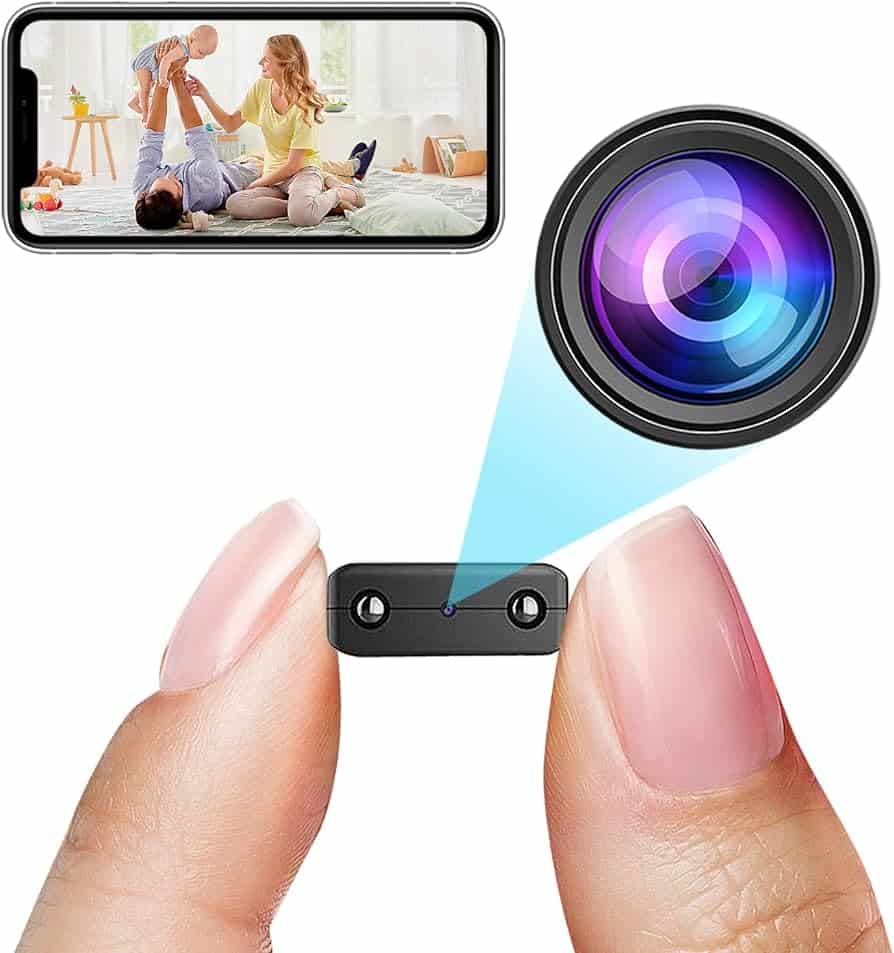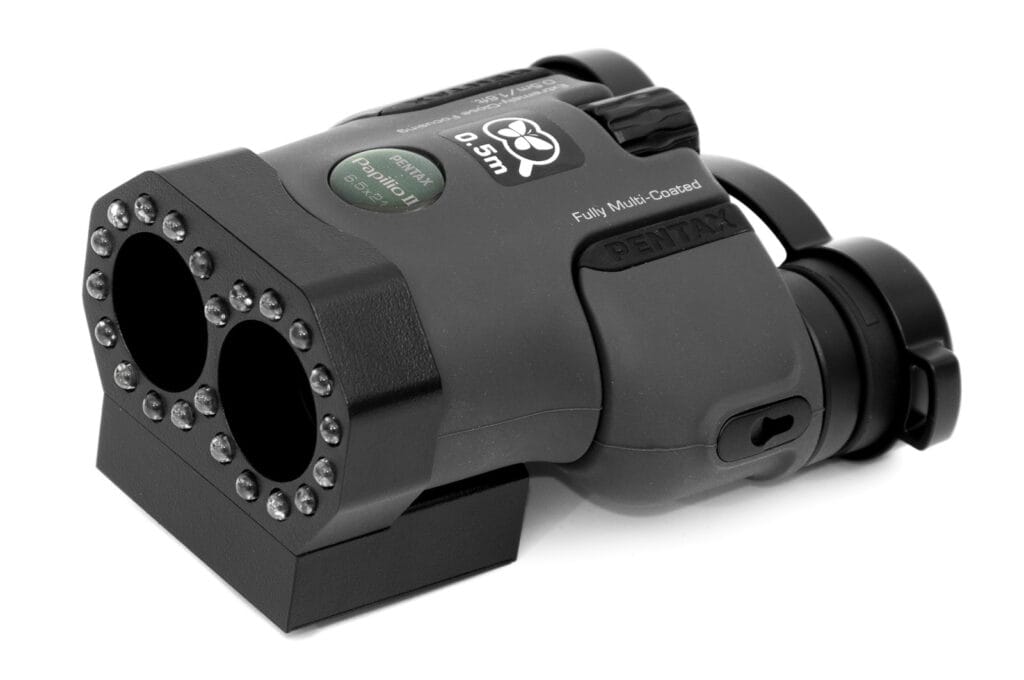Individual surveillance methods are evolving in conjunction with technological advancement.
Hidden cameras are becoming increasingly popular as espionage and violation of privacy techniques.
Light bulbs are a typical and unexpected concealing place for hidden cameras.
In this article, we will look at identifying if a light bulb is a camera and some warning indicators.
We will also show you how to determine if a light bulb is a camera and provide other privacy advice and precautions.
Whether you are concerned about potential hidden cameras in your house, office, or other public locations.
This article will offer you useful information to assist you in identifying the presence of a concealed camera in a light bulb.
Types Of Hidden Cameras
Hidden cameras can take several shapes, all intended to be covert and fit in with their environment.
They are divided into two types: wired cameras and wireless cameras.
Wired Cameras
In contrast, wired cameras require physical connections to send video and audio signals.
Cables are often used to link them to a recording device or display. Wired cameras can be installed invisibly, but visible wires may disclose their presence.
They are frequently employed in business environments such as offices or stores that require a more permanent surveillance solution.
Wireless Cameras
These hidden cameras have grown in popularity because of their simplicity and ease of installation.
Wireless cameras wirelessly broadcast video and audio information to a receiver or over a Wi-Fi connection.
They are frequently small and can be camouflaged as commonplace objects such as light bulbs, clocks, or picture frames.
Wireless cameras are useful for applications where running wires would be difficult or inconvenient.
How Cameras Are Hidden In Light Bulbs
Because of their ubiquity and inconspicuousness, light bulbs are excellent hiding places for hidden cameras.
Here are two common methods for concealing cameras in light bulbs:
Infrared Cameras

Another form of hidden camera regularly found within light bulbs is infrared (IR) cameras.
Infrared technology is used in these cameras to capture photos, even in low-light or no-light settings.
Thermal radiation generated by objects can be detected and amplified by infrared cameras, allowing them to capture crisp images in the dark.
Individuals can perform covert surveillance without arousing suspicion by concealing an infrared camera within a light bulb.
Micro Camera Technology

Cameras have become smaller and more discrete as technology has advanced.
Micro cameras, often known as pinhole cameras, are small cameras that may fit inside the framework of a light bulb.
These cameras are designed to capture high-quality video while staying almost invisible to the naked eye.
They can be strategically placed within the bulb to provide effective surveillance while remaining undetected.
How To Identify A Camera In A Light Bulb

1. Red Or Green Blinking Lights
To signify recording or Wi-Fi connectivity, some hidden cameras incorporate indicator lights that flicker, usually red or green.
Any blinking lights originating from a light bulb could indicate a hidden camera.
2. Irregularities In The Bulb
Examine the light bulb carefully for any flaws. Hidden cameras may cause the bulb to appear strange, such as excessive weight or unusual shapes.
Inside the bulb, suspicious wiring or lenses may be apparent.
3. Unusual Glare Or Reflection
Look for any strange glare or reflections from the light bulb.
Due to the camera lens or other components inside, hidden cameras within bulbs may produce a different type of reflection than ordinary bulbs.
4. Unexplained Wi-Fi Networks
Hidden cameras that broadcast video wirelessly may establish a Wi-Fi network for remote access.
If you see an unusual Wi-Fi network in your area, it could be a concealed camera hidden within a light bulb or other disguised object.
Steps To Check If A Light Bulb Is A Camera
If you believe that a light bulb contains a concealed camera, follow these two methods to confirm your suspicions:
Conducting A Signal Sweep
A signal sweep is a more advanced approach for detecting hidden cameras within a light bulb.
To perform this, you’ll need a gadget developed specifically for detecting wireless signals, such as a bug detector or a radio frequency (RF) detector.
These sensors can detect the existence of wireless transmissions, which are frequently used by hidden cameras to transmit video and audio signals.
Turn on the RF detector and scan the area around the light bulb.
Slowly and methodically move the detector across the region, paying attention to any notable signal spikes or changes.
If the sensor detects any significant signals that match the frequency utilized by wireless cameras, it could suggest the presence of a hidden camera within the light bulb.
Visual Inspection
Begin by visually inspecting the light bulb thoroughly. Examine the bulb carefully for abnormalities or strange traits.
Look for any visible wires, lenses, or other components that appear out of place. Take note of the bulb’s shape and weight—hidden cameras may modify these qualities.
If you detect anything out of the ordinary or suspicious, it could indicate that the light bulb has a concealed camera.
Preventive Measures: What Precautions You Should Take If You Think Your Light Bulb Is a Hidden Camera?
Here are a few more suggestions and precautions to consider when it comes to protecting your privacy and guaranteeing the absence of hidden cameras in your surroundings:
1. Secure Your Wi-Fi Network
Ensure your Wi-Fi network is securely secured with a strong password to prevent illegal access to your wireless cameras (or potential concealed cameras).
Regularly update the firmware on your router and enable any security features provided by your network provider.
2. Use Privacy Protection Tools

Consider utilizing privacy safeguards such as camera lens detectors or infrared light detectors.
By detecting the existence of camera lenses or infrared light emissions, these devices can assist you in identifying hidden cameras.
Such gadgets can add an extra layer of security and peace of mind.
3. Consult Professionals If Suspicious
If you have significant suspicions or concerns regarding concealed cameras, contacting experts in electronic surveillance detection is best.
They have the knowledge and sophisticated equipment to conduct thorough sweeps and detect hidden cameras.
4. Be Mindful Of Public Places
Be vigilant and mindful of your surroundings in public places such as hotel rooms, public restrooms, or changing rooms.
Avoid storing your possessions near suspicious-looking light bulbs and promptly report any concerns to the proper authorities.
You May Also Like!
- How Many Pictures Can A Disposable Camera Take?
- How To Play The Tape In CA 920 Camera? 7+ Ways
- How To Power Cycle Wyze Camera?
- How To Turn Off Ring Camera Without App? 6+ Ways
- How To Reset Blurams Camera?
- Why Is My Ring Doorbell Camera Black And White? 6+ Fixes
- How To Disable A Wi-Fi Security Camera? (Wired and Wireless)
- How To Turn Off The Light On A Security Camera? 7+ Ways
- How To Charge Eufy Security Camera?
- Security Camera Red Lights: Why Do Security Cameras Have A Red Light?
Conclusion,
Hidden cameras hidden within light bulbs represent a novel and alarming invasion of privacy.
Individual surveillance methods are evolving in tandem with technological advancement.
Recognizing the warning symptoms and taking the required actions to protect oneself is critical.
Remember that maintaining your privacy is critical.
If you suspect the presence of hidden cameras within light bulbs or other objects in your surroundings, stay watchful, trust your intuition, and take appropriate action.
You can help protect your privacy and personal space by staying aware and proactive.
